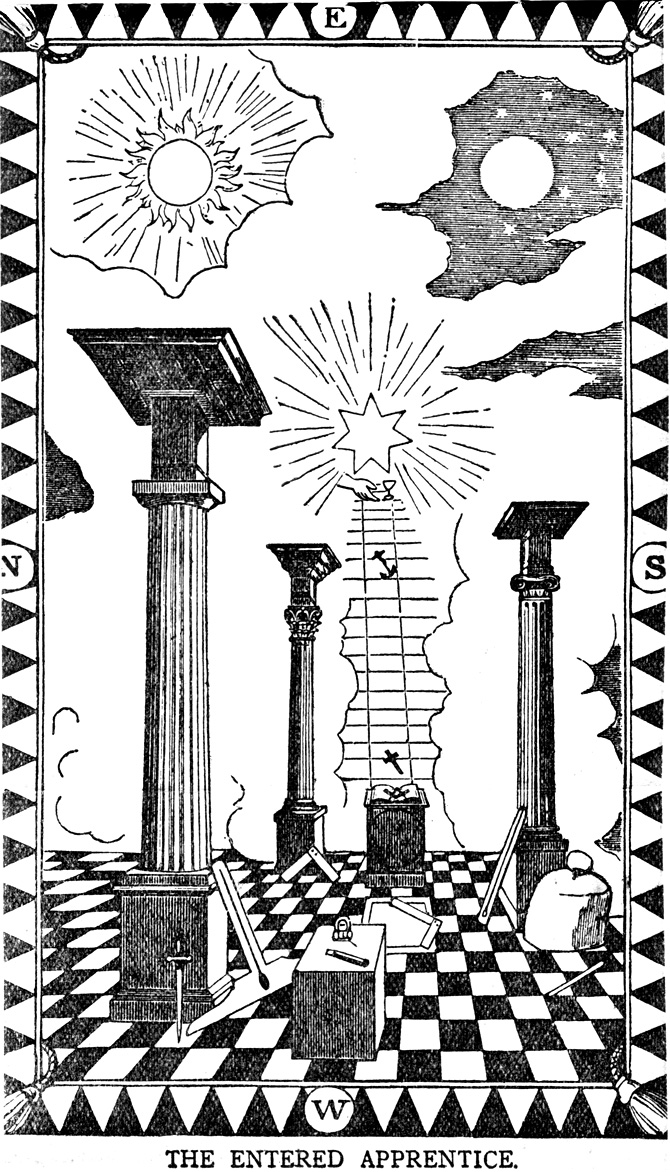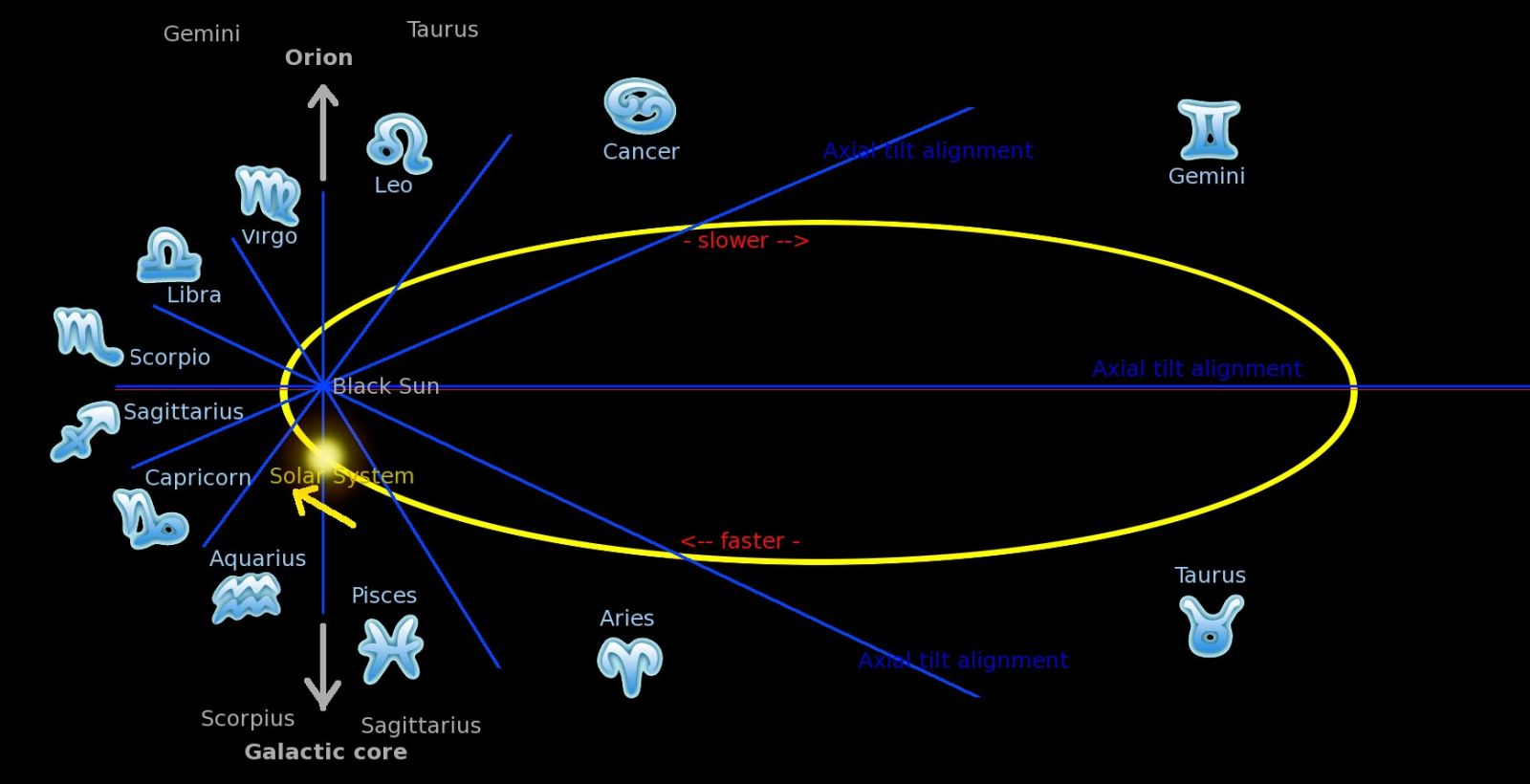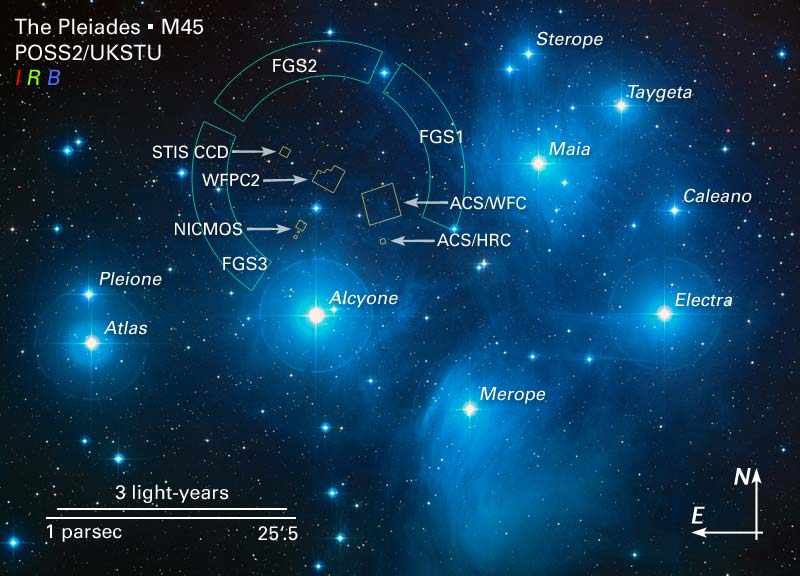It looks like you're using an Ad Blocker.
Please white-list or disable AboveTopSecret.com in your ad-blocking tool.
Thank you.
Some features of ATS will be disabled while you continue to use an ad-blocker.
share:
Hey mods, not too sure where to post this so feel free to move it as you see fit. Thanks!
There is a theory that Our Sun is a part of a Binary Solar system. Our "solar system" actually orbits around this other solar system. All our planet rotations are because we orbit around this other solar system and it actually comes to pass every 25,920 years. Sound familiar? Ancient civilizations call it "Nibiru" and is where the Annunaki reside. Every one of the cycles that have been discovered in our historical record are perfect sub-divisions of 25,920 years. That's the great mystery. NASA Knows it's there, but it hasn't been publically released because of the turmoil it could create. But if you really think about it, it makes a lot of sense. The universe consists of "push pull" momentum, just like a pendulum. What you would call, "gravity". To orbit, you must be pulled away and pushed back to something. Our sun is pushed and pulled by this other star that is in orbit with us. We see in our telescopes that 90% of stars have a companion, so why not ours?
It is a brown dwarf star in the third-density, but it gives off enough light for scientists to know it's there. In almost every masonic diagram there is 2 stars and 1 moon. What does this tell you? It is hidden right out in the open like many truths. There is also NASA evidence that 80% of stars in the galaxy are binary stars. The ancients knew it was there, so why is it being kept from us? What we would call a "galaxy" is actually a star system that consists of 2 stars that orbit eachother.
Masonic pictures:



How it works:

This is the most informative article I could find to get the point across: Please read. Other links were blocked? Oh well.
Binary Partner
Binary System
This link has NASA images on it:
NASA Links
There is a theory that Our Sun is a part of a Binary Solar system. Our "solar system" actually orbits around this other solar system. All our planet rotations are because we orbit around this other solar system and it actually comes to pass every 25,920 years. Sound familiar? Ancient civilizations call it "Nibiru" and is where the Annunaki reside. Every one of the cycles that have been discovered in our historical record are perfect sub-divisions of 25,920 years. That's the great mystery. NASA Knows it's there, but it hasn't been publically released because of the turmoil it could create. But if you really think about it, it makes a lot of sense. The universe consists of "push pull" momentum, just like a pendulum. What you would call, "gravity". To orbit, you must be pulled away and pushed back to something. Our sun is pushed and pulled by this other star that is in orbit with us. We see in our telescopes that 90% of stars have a companion, so why not ours?
It is a brown dwarf star in the third-density, but it gives off enough light for scientists to know it's there. In almost every masonic diagram there is 2 stars and 1 moon. What does this tell you? It is hidden right out in the open like many truths. There is also NASA evidence that 80% of stars in the galaxy are binary stars. The ancients knew it was there, so why is it being kept from us? What we would call a "galaxy" is actually a star system that consists of 2 stars that orbit eachother.
Masonic pictures:



How it works:

This is the most informative article I could find to get the point across: Please read. Other links were blocked? Oh well.
Binary Partner
Binary System
This link has NASA images on it:
NASA Links
Trust me, if our sun was gravitationally influenced by any other 'nearby' massive object we'd know about it!
Though our solar system does move (albeit very gradually) around the solar system, it is for the most part stationary relatively speaking. If our sun were in a binary orbit with another object it would have a significant impact on how we view the rest of the universe. The reason for this is the localized motion of our sun (while orbiting this other object) would radically change the relative position of the stars we observe from earth on a regular basis. It would also bend the light coming from other stars and change their relative position from our perspective.
Believe me, we'd know.
Though our solar system does move (albeit very gradually) around the solar system, it is for the most part stationary relatively speaking. If our sun were in a binary orbit with another object it would have a significant impact on how we view the rest of the universe. The reason for this is the localized motion of our sun (while orbiting this other object) would radically change the relative position of the stars we observe from earth on a regular basis. It would also bend the light coming from other stars and change their relative position from our perspective.
Believe me, we'd know.
edit on 2/21/2013 by Flyingclaydisk because: syntax
reply to post by clairvoyantrose
It is Binary, read this.
Swami Sri Yukteswar Giri................Sri Yukteswar’s introduction to The Holy Science includes his explanation of the Yuga Cycle – revolutionary because of his premise that the earth is now in the age of Dwapara Yuga, not the Kali Yuga that most Indian pundits believe to be the current age.[4] His theory is based on the idea that the sun “takes some star for its dual and revolves round it in about 24,000 years of our earth – a celestial phenomenon which causes the backward movement of the equinoctial points around the zodiac.”[1] The common explanation for this celestial phenomenon is precession, the ‘wobbling’ rotating movement of the earth axis. Research into Sri Yukteswar’s explanation is being conducted by the Binary Research Institute.
en.wikipedia.org...
It is Binary, read this.
Swami Sri Yukteswar Giri................Sri Yukteswar’s introduction to The Holy Science includes his explanation of the Yuga Cycle – revolutionary because of his premise that the earth is now in the age of Dwapara Yuga, not the Kali Yuga that most Indian pundits believe to be the current age.[4] His theory is based on the idea that the sun “takes some star for its dual and revolves round it in about 24,000 years of our earth – a celestial phenomenon which causes the backward movement of the equinoctial points around the zodiac.”[1] The common explanation for this celestial phenomenon is precession, the ‘wobbling’ rotating movement of the earth axis. Research into Sri Yukteswar’s explanation is being conducted by the Binary Research Institute.
en.wikipedia.org...
For anyone interested, a paper concerning the Sun, the heliosphere and terrestrial magnetosphere being modulated by planets, was recently published
in Planetary and Space Science journal titled "Planetary Harmonics in the historical Hungarian aurora record (1523-1960)" is available free for a
limited time through this link; tallbloke.files.wordpress.com/2013/02/scafetta_willson_2013_aurora_pss.pdf
The effects of sun weather and our own atmosphere is becoming more clearly defined through 2 years of direct observation and many more of indirect observation.
With the last solar minimum ending and our pathetic current solar maximum that should be raging right now, but is not, leads many to fear that if the minimum becomes great, the shrinking of our atmosphere will continue, and push the earth into an ice age. We are currently not seeing the flares that we should be seeing, which is not replenishing the upper atmosphere as it should be....will be very interesting either way.
The effects of sun weather and our own atmosphere is becoming more clearly defined through 2 years of direct observation and many more of indirect observation.
With the last solar minimum ending and our pathetic current solar maximum that should be raging right now, but is not, leads many to fear that if the minimum becomes great, the shrinking of our atmosphere will continue, and push the earth into an ice age. We are currently not seeing the flares that we should be seeing, which is not replenishing the upper atmosphere as it should be....will be very interesting either way.
edit on 21-2-2013 by reverandrandy because: more to add
reply to post by Flyingclaydisk
Thanks for your input but I strongly disagree. It's not a massive star, but we definately do orbit another star. Once you hear the theory, everything makes sense in our solar system. It's kept from us because it is a great and humbling truth that there is another star and planets with life within orbit of us.
Thanks for your input but I strongly disagree. It's not a massive star, but we definately do orbit another star. Once you hear the theory, everything makes sense in our solar system. It's kept from us because it is a great and humbling truth that there is another star and planets with life within orbit of us.
reply to post by clairvoyantrose
You ever think those first two pics are of the North Star?
It appears to me they are depicting the third one to be really bright, ie: North Star......The brightest star in the sky....
That is my interpretation of it anyways....Take it for what its worth
You ever think those first two pics are of the North Star?
It appears to me they are depicting the third one to be really bright, ie: North Star......The brightest star in the sky....
That is my interpretation of it anyways....Take it for what its worth
Originally posted by clairvoyantrose
reply to post by Flyingclaydisk
Thanks for your input but I strongly disagree. It's not a massive star, but we definately do orbit another star. Once you hear the theory, everything makes sense in our solar system. It's kept from us because it is a great and humbling truth that there is another star and planets with life within orbit of us.
What would the effect be? I am not expert at all and don't quite understand why someone would hide this information?
Originally posted by clairvoyantrose
reply to post by Flyingclaydisk
Thanks for your input but I strongly disagree. It's not a massive star, but we definately do orbit another star. Once you hear the theory, everything makes sense in our solar system. It's kept from us because it is a great and humbling truth that there is another star and planets with life within orbit of us.
I see nothing that makes scientific sense in this theory.
Simply put, if this allegation were true celestial navigation, which has been successfully done for centuries, would simply not be possible!
I'm all ears for some grand conspiracy, but you'll need to have some scientific plausibility in order for me not to dismiss it out of hand.
Originally posted by Chrisfishenstein
reply to post by clairvoyantrose
You ever think those first two pics are of the North Star?
It appears to me they are depicting the third one to be really bright, ie: North Star......The brightest star in the sky....
That is my interpretation of it anyways....Take it for what its worth
No offense but, Polaris is not the brightest star in the sky. Sirius, Canopus and Arcturus are in that order. Polaris is about 45th
There has to be an invisible sun
It gives it's heat to everyone
There has to be an invisible sun
It gives us hope when the whole day's done
reply to post by abeverage
No offense taken! I said I am no expert.....Just my opinion, which could change with some evidence! I was just throwing an opinion out there to see what the OP thought.
No offense taken! I said I am no expert.....Just my opinion, which could change with some evidence! I was just throwing an opinion out there to see what the OP thought.
reply to post by Flyingclaydisk
There are institutes that are studying this as we speak.
Binary Research
Evidence Mounts
When 90% of stars are binary, what makes us the exception? Does this not make copious amounts of sense when you really think about it? The earth axis wobbles on this 25,000 year cycle. Why do you not want to believe?
There are institutes that are studying this as we speak.
Binary Research
Evidence Mounts
When 90% of stars are binary, what makes us the exception? Does this not make copious amounts of sense when you really think about it? The earth axis wobbles on this 25,000 year cycle. Why do you not want to believe?
reply to post by clairvoyantrose
Hi,
I'm betting that our binary white dwarf companion star is why we are in a fluff cloud; fluff cloud
I read somewhere that clouds form after a certain type of supernova.
Cool articles.
Where does gold come from?
I'm thinking that wherever in the universe there is a remnant of a supernova/nebula, there is at least one planet teeming with life in it's (cloud/nebula) midst.
Nebular Theory
Taken from an earlier post; speculative theory
Hi,
I'm betting that our binary white dwarf companion star is why we are in a fluff cloud; fluff cloud
I read somewhere that clouds form after a certain type of supernova.
Types of Supernovae
Supernovae are divided into two basic physical types:
Type Ia. These result from some binary star systems in which a carbon-oxygen white dwarf is accreting matter from a companion. (What kind of companion star is best suited to produce Type Ia supernovae is hotly debated.) In a popular scenario, so much mass piles up on the white dwarf that its core reaches a critical density of 2 x 109 g/cm3. This is enough to result in an uncontrolled fusion of carbon and oxygen, thus detonating the star.
Type II. These supernovae occur at the end of a massive star's lifetime, when its nuclear fuel is exhausted and it is no longer supported by the release of nuclear energy. If the star's iron core is massive enough, it will collapse and become a supernova.
Cool articles.
Where does gold come from?
A Type II supernova results from the death of a single star much more massive than the sun. When such a star begins to burn out, its core quickly collapses. Tremendous energy is suddenly released in the form of neutrinos (a type of subatomic particle) and electromagnetic radiation (electric and magnetic energy). This energy causes the star to erupt into a supernova.
I'm thinking that wherever in the universe there is a remnant of a supernova/nebula, there is at least one planet teeming with life in it's (cloud/nebula) midst.
Nebular Theory
Taken from an earlier post; speculative theory
I agree with the previous poster, your images just depict the North Star. If it wasn't then why wouldn't this 'second sun' be depicted as round, like
the first one?
Also our sun does orbit around the centre of the Milky Way, so wouldn't this account for a 'push-pull' theory orbit?
Also our sun does orbit around the centre of the Milky Way, so wouldn't this account for a 'push-pull' theory orbit?
edit on 21/2/13 by Kr0nZ
because: (no reason given)
reply to post by Kr0nZ
The milky way is a part of the system that is orbiting around the dwarf companion star.
The milky way is a part of the system that is orbiting around the dwarf companion star.
reply to post by clairvoyantrose
It can be as simple OP as this young SOL system coming back in contact with elder regions of the local cosmos which may be associated with ACCESS here from where ever the STAR you speak may come. From, the details may be held back by some of the organization you speak in concern with WHAT IS SEEN due to some on EA*RTH not fully being prepared...
I mean the inhabitants here are still in WAR for advancement phase instead of seeking better ways to peacefully ASSIST ALL? Keeping this in mind- you can almost SEE there are potential measures THEY may have to set here before full disclosure.
And this is why the orgs. you speak of possibly do not SHARE to the fullest what they can see-techs they have obtained & also found and reverse engineered as well as beings with or without understood intelligence they may and are in contact with. Again potential measures may be established and understood through FINDINGS and possible ENCOUNTERS and so they follow suit...
There was a time I was shared information about NIBIRU and this was in 1998. Someone close to me my genetic elder brother (...) was sharing with me back then how there was this Starship/invisible Star supposed to come around near the year 2000 it was some of his y2k data he was tossing around/ sharing with me. I was a little interested for I have always been into the Cosmos since single digit ages but I didn't have any more data then that back then and also my CONSCIOUSNESS back then couldn't even consider 2 Stars... So it kind of fell into the background.
Then as we got closer to 2012 1 found ATS and some of the data here RE EXPOSED ME TO the Second STAR and ( its INHABITANTS- WE LOVE YOU ANNUNAKI-
And this exposure here on ATS (PCPT- WE LOVE YOU PLEIDIANS- why also doing my best to personally LOGICALLY filter out as much intentional distract data from the TRUTH helped 1 to come to my own conclusions. And if you REALLY are serious about finding out you will research as much as you can and you MAY begin to see things things others around you and close to you may not. SO 1 is just letting you know to try to take this subject as serious as you can. Imaging you learn things that are related to OBJECTIVE TRUTH in relation to this TRANSPORT you speak of as a Brown Star??? hmmm and you cannot even try to explain it to those close to you due to you knowing their CONSCIOUSNESS isn't prepared to filter out preprogrammed thru life DATA that may be highly subjective to ALLOW for TRANSMISSION of the INTELLIGENCE you speak of in OP.
OP my friend I know I kind of went a little deep into the subject from my subjective views of the potential objective reality, but I do possess a bit of Compassion for this subject.
Consider a higher dimension EXIST... There they are in the what humans know as SOUL/SPIRIT/INTERNAL ENERGY most of the time perhaps until Harvest of the Fruits YOU CREATOR Creations- HUMANS-WE LOVE YOU HUMANITY- or separation between Wheat and Chaff? Anyway consider they are not umm just flesh or biotic forms.. And that they can use their ORIGINAL energy forms to Enter different realms or dimensions maybe in an exploratory environment SPACE Suit. Used to interact here? So this maybe why there is so much confusion as many try to understand subjectively THEIR OBJECTIVE REALITY AND HOW THEY ARE POSSIBLY CONNECTED HERE... And get here interdimensional or in 3d PRANA suits/CRAFTS designed to FIT the LOCATION & potential measures AGENDA.
Enjoyed the read and the images provided Again I LOVE this subject and its subjective and objective relations to HERE.
NAMASTE
LOVE LIGHT ETERNIA*******
It can be as simple OP as this young SOL system coming back in contact with elder regions of the local cosmos which may be associated with ACCESS here from where ever the STAR you speak may come. From, the details may be held back by some of the organization you speak in concern with WHAT IS SEEN due to some on EA*RTH not fully being prepared...
I mean the inhabitants here are still in WAR for advancement phase instead of seeking better ways to peacefully ASSIST ALL? Keeping this in mind- you can almost SEE there are potential measures THEY may have to set here before full disclosure.
And this is why the orgs. you speak of possibly do not SHARE to the fullest what they can see-techs they have obtained & also found and reverse engineered as well as beings with or without understood intelligence they may and are in contact with. Again potential measures may be established and understood through FINDINGS and possible ENCOUNTERS and so they follow suit...
There was a time I was shared information about NIBIRU and this was in 1998. Someone close to me my genetic elder brother (...) was sharing with me back then how there was this Starship/invisible Star supposed to come around near the year 2000 it was some of his y2k data he was tossing around/ sharing with me. I was a little interested for I have always been into the Cosmos since single digit ages but I didn't have any more data then that back then and also my CONSCIOUSNESS back then couldn't even consider 2 Stars... So it kind of fell into the background.
Then as we got closer to 2012 1 found ATS and some of the data here RE EXPOSED ME TO the Second STAR and ( its INHABITANTS- WE LOVE YOU ANNUNAKI-
And this exposure here on ATS (PCPT- WE LOVE YOU PLEIDIANS- why also doing my best to personally LOGICALLY filter out as much intentional distract data from the TRUTH helped 1 to come to my own conclusions. And if you REALLY are serious about finding out you will research as much as you can and you MAY begin to see things things others around you and close to you may not. SO 1 is just letting you know to try to take this subject as serious as you can. Imaging you learn things that are related to OBJECTIVE TRUTH in relation to this TRANSPORT you speak of as a Brown Star??? hmmm and you cannot even try to explain it to those close to you due to you knowing their CONSCIOUSNESS isn't prepared to filter out preprogrammed thru life DATA that may be highly subjective to ALLOW for TRANSMISSION of the INTELLIGENCE you speak of in OP.
OP my friend I know I kind of went a little deep into the subject from my subjective views of the potential objective reality, but I do possess a bit of Compassion for this subject.
Consider a higher dimension EXIST... There they are in the what humans know as SOUL/SPIRIT/INTERNAL ENERGY most of the time perhaps until Harvest of the Fruits YOU CREATOR Creations- HUMANS-WE LOVE YOU HUMANITY- or separation between Wheat and Chaff? Anyway consider they are not umm just flesh or biotic forms.. And that they can use their ORIGINAL energy forms to Enter different realms or dimensions maybe in an exploratory environment SPACE Suit. Used to interact here? So this maybe why there is so much confusion as many try to understand subjectively THEIR OBJECTIVE REALITY AND HOW THEY ARE POSSIBLY CONNECTED HERE... And get here interdimensional or in 3d PRANA suits/CRAFTS designed to FIT the LOCATION & potential measures AGENDA.
Enjoyed the read and the images provided Again I LOVE this subject and its subjective and objective relations to HERE.
NAMASTE
LOVE LIGHT ETERNIA*******
Originally posted by clairvoyantrose
reply to post by Kr0nZ
The milky way is a part of the system that is orbiting around the dwarf companion star.
So your saying that the milky way and the 200 billion stars it contains orbits around this one star?
I agree that the milky way does orbit something, but I dont think that orbit would make all those stars counts it as being a binary star system.
ETA:
Also the milky way is 100,000 light years in diameter, so wouldn't it need to orbit at about twice the speed of light in order to complete an orbit in 25000 years? I admit the maths probably isn't that cut and dry.
edit on 21/2/13 by Kr0nZ because: (no reason given)
new topics
-
Grenfell Tower Fire revisited
Mainstream News: 33 minutes ago -
The Why Files Lacerta Reveals the Truth of our Creation
Aliens and UFOs: 1 hours ago -
Watts home paranormal activity
Paranormal Studies: 9 hours ago -
So, what is really going on in South Korea ?
World War Three: 9 hours ago -
Congress Says the FBI is Covering Up Vital Info on the Jan 5th 2021 D.C. Pipe Bombs at RNC-DNC.
Political Conspiracies: 10 hours ago
top topics
-
Biden to award Presidential Citizens Medal to Liz Cheney and Bennie Thompson
US Political Madness: 17 hours ago, 12 flags -
Congress Says the FBI is Covering Up Vital Info on the Jan 5th 2021 D.C. Pipe Bombs at RNC-DNC.
Political Conspiracies: 10 hours ago, 12 flags -
Biden Has New Bizarre Injuries to His Face
Politicians & People: 16 hours ago, 12 flags -
The trial on kids was stopped
Medical Issues & Conspiracies: 13 hours ago, 9 flags -
Orbs Appear And Form Triangle On Live Cam.
Aliens and UFOs: 15 hours ago, 6 flags -
Elon Musk Calls for Tommy Robinson to be Freed - and Takes a Dig at Starmer
Politicians & People: 17 hours ago, 6 flags -
So, what is really going on in South Korea ?
World War Three: 9 hours ago, 6 flags -
Something is not adding up in regards to the H-1B commotion
General Conspiracies: 16 hours ago, 5 flags -
Watts home paranormal activity
Paranormal Studies: 9 hours ago, 3 flags -
The Why Files Lacerta Reveals the Truth of our Creation
Aliens and UFOs: 1 hours ago, 2 flags
active topics
-
The trial on kids was stopped
Medical Issues & Conspiracies • 12 • : McGinty -
Grenfell Tower Fire revisited
Mainstream News • 0 • : angelchemuel -
Elon Musk Calls for Tommy Robinson to be Freed - and Takes a Dig at Starmer
Politicians & People • 9 • : Athetos -
Strange fog all over the northern hemisphere
General Conspiracies • 46 • : ADVISOR -
So, what is really going on in South Korea ?
World War Three • 8 • : Athetos -
Congress Says the FBI is Covering Up Vital Info on the Jan 5th 2021 D.C. Pipe Bombs at RNC-DNC.
Political Conspiracies • 24 • : ADVISOR -
The Why Files Lacerta Reveals the Truth of our Creation
Aliens and UFOs • 0 • : 727Sky -
Tesla Cybertruck Explodes in Front of Trump Hotel in Las Vegas
Mainstream News • 155 • : yuppa -
Post A Funny (T&C Friendly) Pic Part IV: The LOL awakens!
General Chit Chat • 7982 • : KrustyKrab -
Ukraine halts transit of Russian gas to Europe after a prewar deal expired
Political Conspiracies • 115 • : Flyingclaydisk

